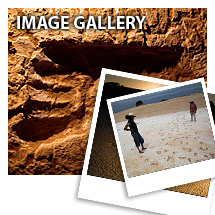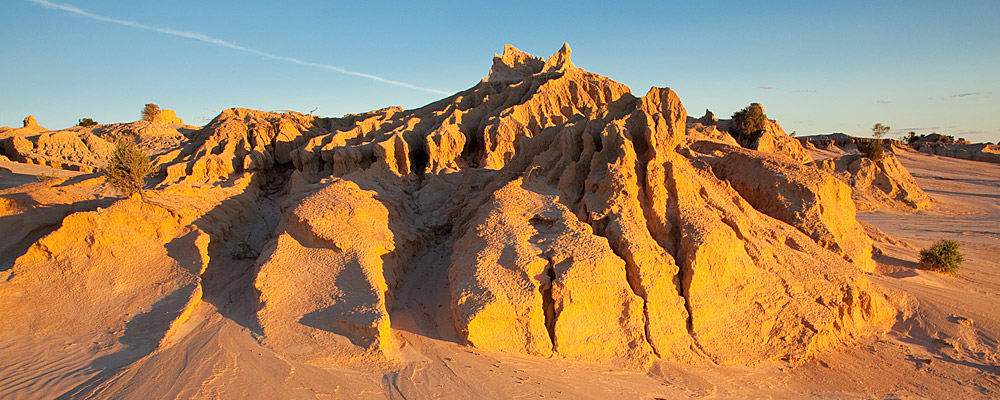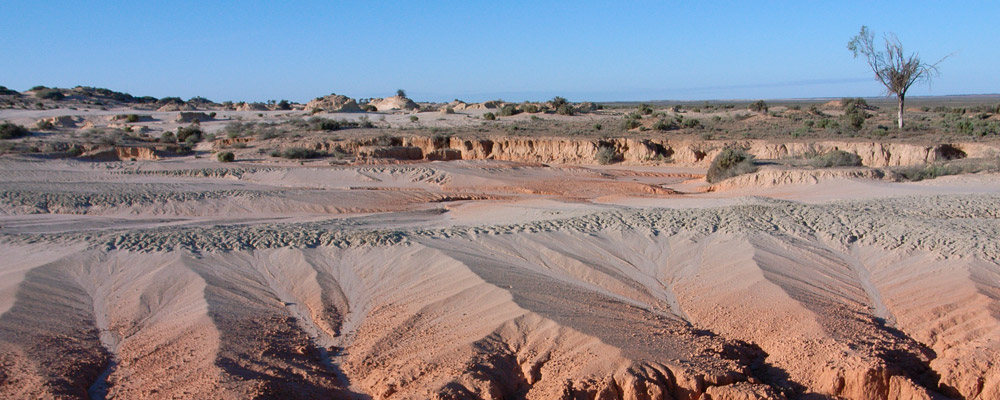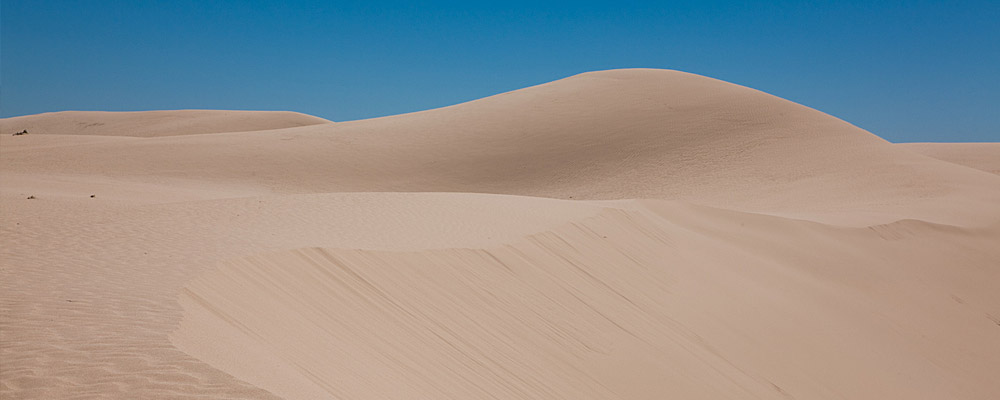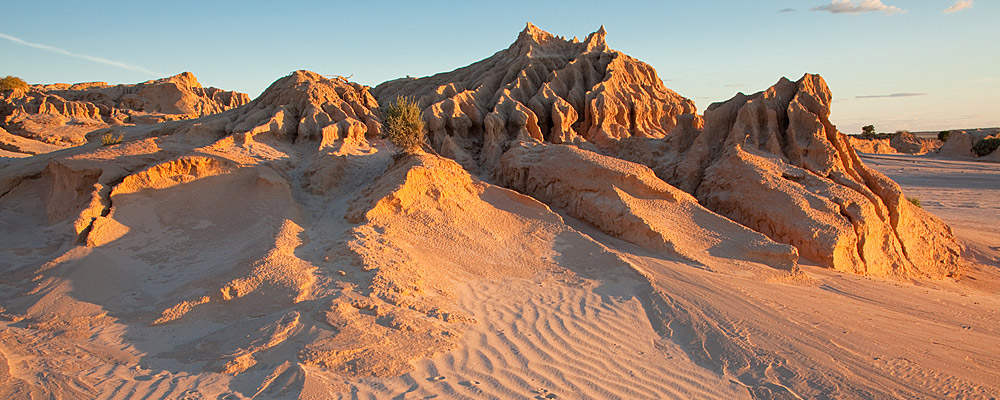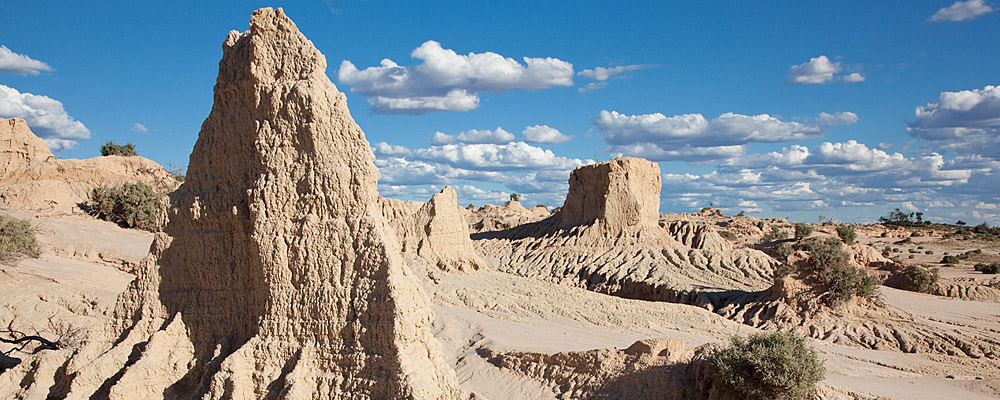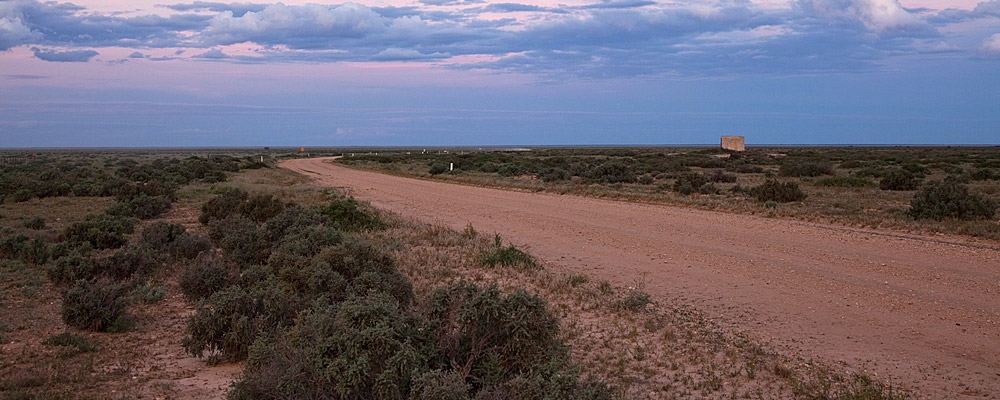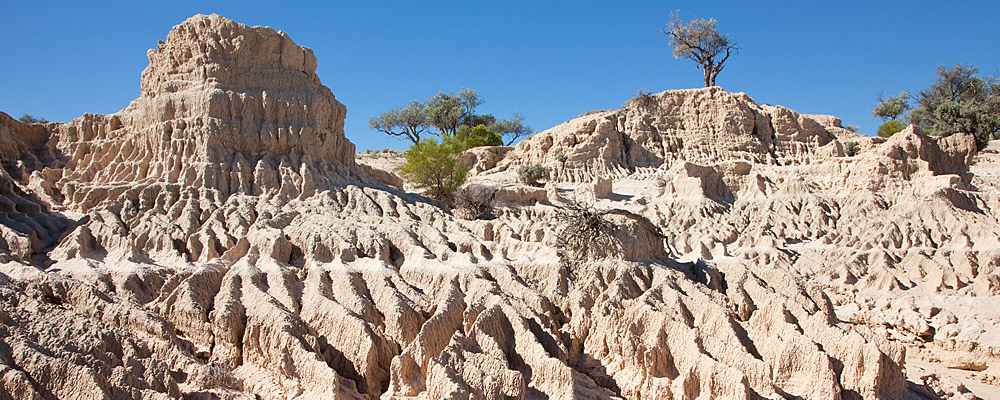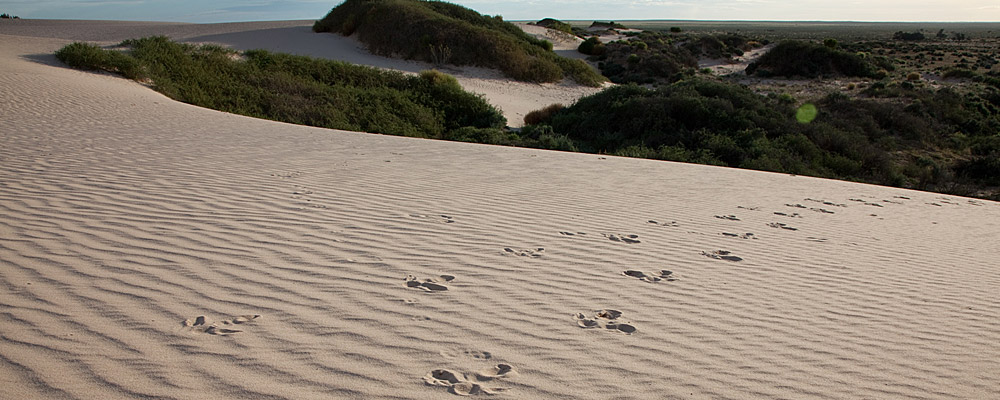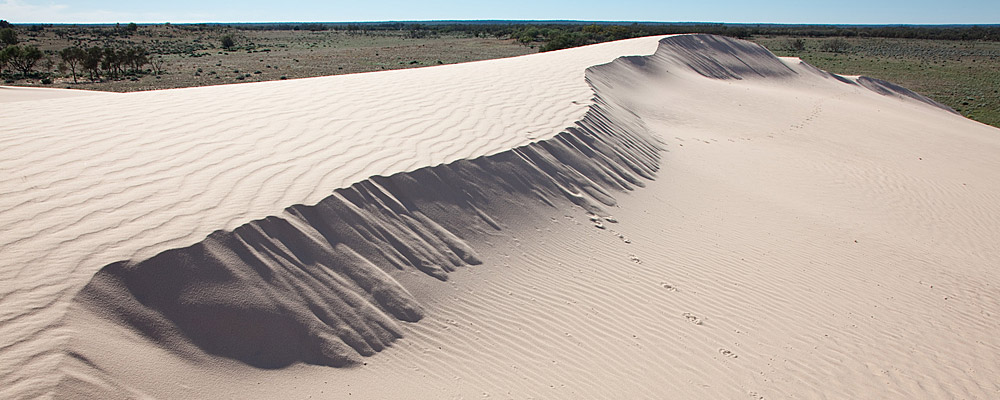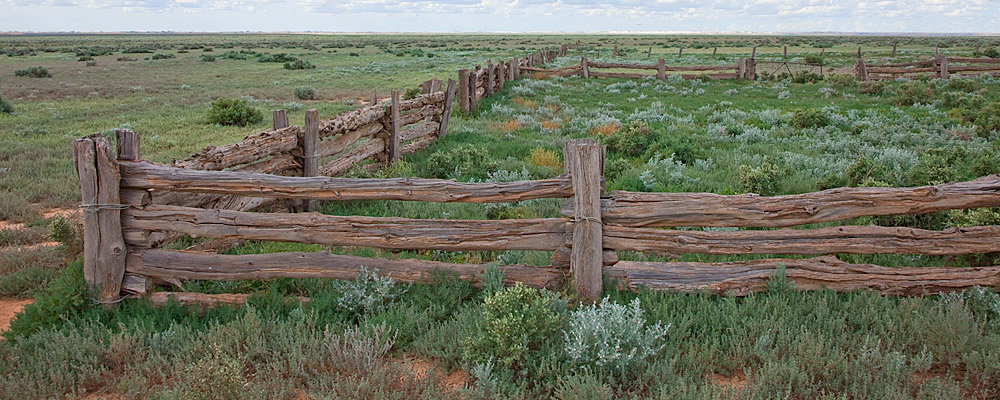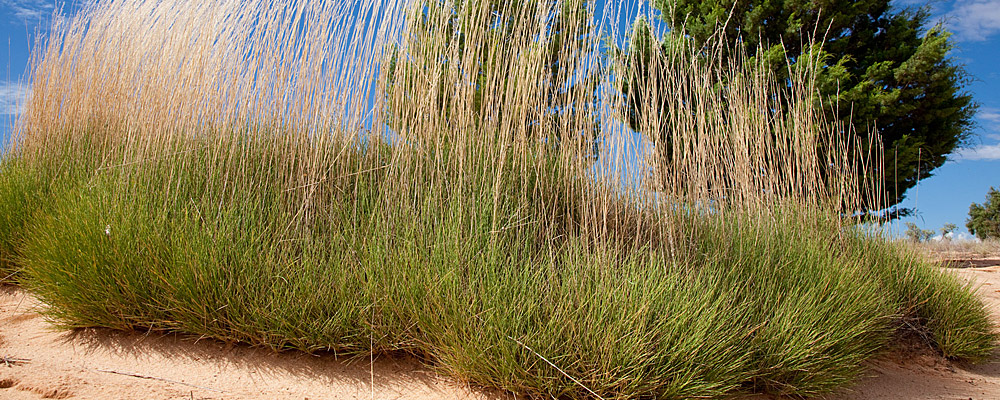Share Mungo Culture
Ancient Footprints
What research has been done on the footprints?
A flurry of excitement and research followed the re-discovery of the footprints. How old were they? How did they survive? Who made them? What were the people doing? What else can we learn from them?
Some of the covering sand dunes were carefully dug away to reveal more footprints. The tracks were all measured, mapped and scanned digitally. Latex moulds were made. Ground-penetrating radar was used to map the claypan which extended under the sand. The chemistry of the clay was analysed. How the claypan related to adjacent sediments was studied. The sediments above and below the clay layer were dated using optically stimulated luminescence (OSL). Most exciting of all, a group of Pintubi people came down from central Australia to use their traditional tracking skills to interpret the tracks.
The Pitjantjatjara visit was very strong and spiritual. They shared the cultural and tracking skills that they have maintained through thousands of years. When walking on the footprint site they commented that it was a dreamtime site and we should be proud as it was more proof of our continuous occupation and connections to this wonderful part of Australia. It made me feel proud to be connected to the Willandra Lakes and Mungo National Park.
Warren Clark, Executive Officer - Mungo Joint Management Advisory Committee
